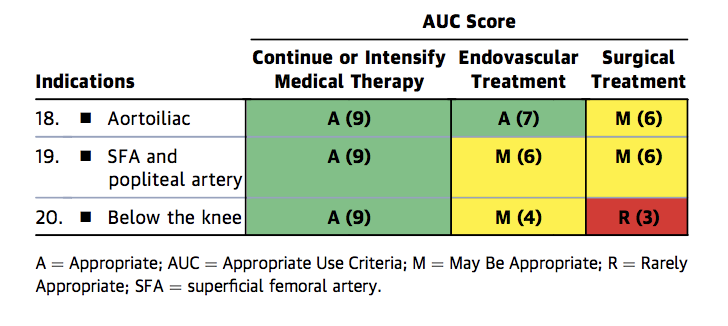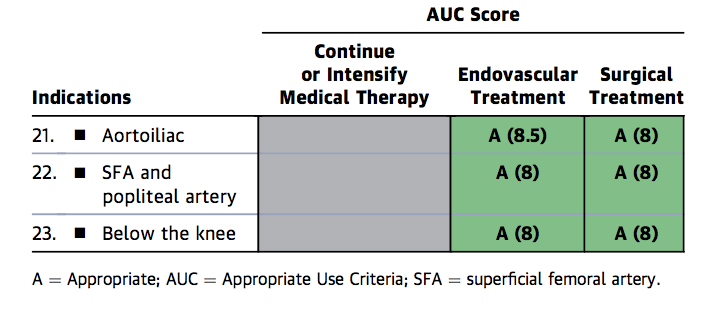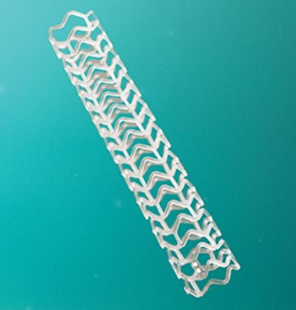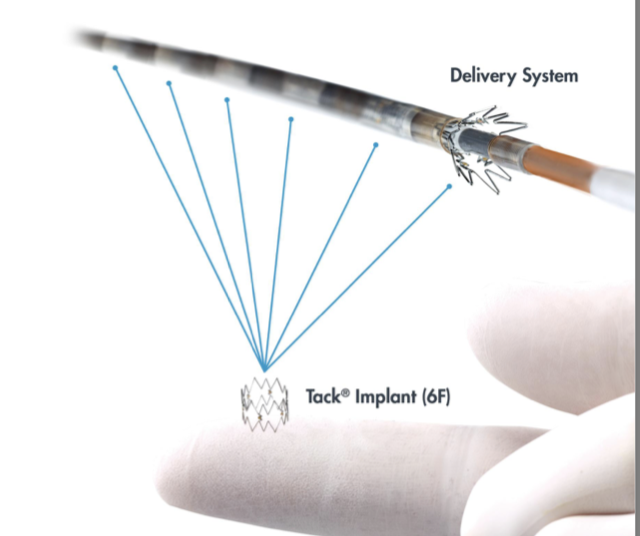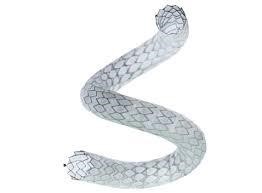Where Have All the Vascular Scaffolds Gone?
INTRODUCTION
The infrainguinal arterial vasculature represents a challenging subset for endovascular treatment due to complex forces on the arteries occurring with lower extremity movement. Arterial torsion, flexion, extension, and compression are examples of these forces, which may lead to stent fracture and higher restenosis rates after treatment.1 While venous conduit vascular bypass of the femoropopliteal (FP) segments remains a viable option with approximately 75% patency at 5 years, it is often utilized only after an endovascular approach has failed. If a venous conduit is not available, bioprosthetic grafts must be used with a much lower 5-year patency (less than 50%).2
Multiple studies have shown superior patency with stents over percutaneous transluminal angioplasty (PTA) alone in the treatment of FP segments.1,3,4 This benefit is somewhat mitigated by the increased complexity of treatment when these stents fail. The introduction of drug eluting stent (DES) technology has further improved primary stent patency; however, their use has been tempered by recent Food and Drug Administration (FDA) warnings associating the devices with higher mortality.5 These concerns were raised after publication of a meta-analysis of randomized controlled trials of paclitaxel-coated devices that showed an increase in mortality beginning at 2 years. While multiple subsequent studies, including a large analysis of >16,000 Medicare patients, failed to confirm this associate, use of the devices has temporarily slowed.6-9
This leaves a large potential role for new technologies such as bioabsorbable vascular scaffolds (BVS) which may provide enhanced early patency while mitigating downstream problems such as in-stent restenosis. In this review, we will discuss the various available treatments of infrainguinal peripheral arterial disease and evaluate the future of vascular stents/scaffolds in both the femoropopliteal and the below the knee vessels.
STENTING FOR FEMOROPOPLITEAL DISEASE
Bare Metal Stents
While the current endovascular vascular practice favors attempting to avoid stent placement as first line treatment due to issues described above, there remain important indications for stenting, such as residual stenosis after PTA and flow limiting dissection.1 The combined ACC/AHA/SCAI/SIR/SVM "Appropriate Use Criteria" state that in patients on optimal medical therapy, endovascular stenting of stenotic FP disease is appropriate for claudication and critical limb ischemia (Figures 1a-c).10
Figure 1a. Appropriate Use Criteria for Intermittent Claudication Despite Guideline Directed Medical Therapy.
Figure 1b. Appropriate Use Criteria for Critical Limb Ischemia
Figure 1c. Appropriate Use Criteria Device Selection for FP disease
FP = Femoropopliteal, A= Appropriate, AUC = Appropriate Use Criteria, M = May Be Appropriate, R = Rarely Appropriate, SFA = Superficial Femoral Artery.
The Society for Cardiovascular Angiography and Guidelines categorize bare metal stents as a IIA and DES as a IA recommendation for FP disease.11 The society of vascular surgery guidelines12,13 on critical limb ischemia (CLI) recommends against using stents below the knee (BTK).
The first major study comparing vascular stenting to PTA alone was by Schillinger et al in 2006.3 In the "as treated" analysis, 12-month primary patency was markedly higher with bare metal stents (63% vs. 37% p=0.001). This was followed by the RESILIENT randomized control trial which compared bare metal stenting with the Lifestent® to PTA. The study again showed improved primary patency at 3-years (75.5% vs. 41.1% p< 0.001).4
The subsequent SUPERB registry evaluated the Supera woven nitinol stent, demonstrating a primary patency of 86.3% and zero stent fractures.14 Longer term follow up data showed a 36-month target lesion revascularization free survival of 82%.1 Following the release of the Supera stent, several companies introduced nitinol bare metal stents which also carried a low stent fracture rate and good primary patency. For example, the Complete® self expanding stent (Medtronic, Minneapolis, MN) showed a 1-year primary patency of almost 75% and zero stent fractures in the femoropopliteal segments (note: distal popliteal lesions were excluded).15
Drug Eluting Stents
Drug eluting technology was an important advancement in endovascular treatment of peripheral arterial disease. The Zilver® paclitaxel eluting stent (Cook Medical, Bloomington, IN) was studied head-to-head versus optimal PTA and bare metal stenting on an as needed basis. The trial showed that the Zilver® DES had superior 5-year primary patency (66.4% vs. 43.4% p <0.001). This study was followed by the IMPERIAL trial examining the Eluvia™ DES (Boston Scientific, Marlborough, MA) compared to Zilver®.16 Eluvia™ met prespecified non-inferiority criteria at 1-year with an 88.5% versus 79.5%, p for non-inferiority < 0.01. Eluvia™ also had a numerically lower incidence of major adverse events 4.9% versus 9.0%, p = 0.098.17
NOVEL DEVICES
A broad range of devices are under development and some are undergoing early phase trials to meet remaining needs in the field. Below we describe some import examples of new or evolving technologies.
Bioabsorbable Vascular Scaffolds
Dissolving bioabsorbable vascular scaffolds (BVS) were initially introduced in the coronary arteries. The initial excitement surrounding these devices was tempered with the publication of the ABSORB randomized trials, which compared the ABSORB BVS (Abbott Vascular, Chicago, IL) to standard coronary DES (Figure 2a).18-20
Figure 2a. ABSORB Bioabsorbable Stent (Courtesy Abbott Vascular)
A meta-analysis of ABSORB with 3,389 patients showed a device related thrombosis of 2.3% for BVS versus 0% for DES at 3 years [HR 3.79 95% CI 1.72-8.36, p = 0.002).21
Despite the concerns related to the first generation BVS in the coronaries, BVS in the periphery appears to be gaining momentum with the recent presentation of the single arm ABSORB BTK pilot study 5-year results. The study was presented at the Vascular InterVentional Advance (VIVA) 2019 meeting22 and reported the results of 55 limbs treated with BVS demonstrating a 90% rate of complete wound healing. There was a 0% amputation rate and a 5-year vessel primary patency approaching 75%. Two upcoming trials are expected to further add to the field: the LIFE-BTK randomized trial which will evaluate the Esprit BVS (Abbott Vascular) versus PTA alone and the Credence BTK-1 study which is a single arm pilot study of the Credence BTK device (Meril, Gujarat, India).
Vascular Tack System
The Tack endovascular system (InTack Vascular, Wayne, PA) are small nitinol implants 6 mm in length which are used to reappose dissection flaps preventing propagation and lumen loss (Figure 2b).
Figure 2b. Tack Endovascular System (courtesy Tack Vascular)
These devices were evaluated in the recently published single arm TOBA II study, which evaluated 213 patients who received treatments with Tacks after PTA. The study showed a 1 year 79.3% primary patency rate with 92.1% of lesions having complete resolution of the vascular dissection.23 The TOBA III single arm multicenter trial examined the tacks in long lesions paired with definitive treatment with drug coated balloons was recently reported at Transcatheter Cardiovascular Therapeutics Conference (TCT) in 2019. The study showed a 95% primary patency at 12 months. Additionally, the TOBA II BTK study, which examined the device in the tibial vessels, was presented at Vascular InterVentional Advances (VIVA) 2019. The presentation reported a 6-month rate of wound healing of 73.8% and an 87.3% target lesion patency.
BioMimics 3D Swirling Flow Stent
The 3D swirling flow stents (Veryan Medical) is a helical stent which operates based on the hypothesis that low wall shear stress created by standard straight stents may increase the hazard of vascular restenosis. Animal models evaluating the swirling flow stent have shown a significant reduction in neointimal thickness (p <0.001). The MIMICS 2 study examining the device is nearing completion and should be presented in the near future. The preliminary results (with 10% of patients still needing final follow up) showed a 2-year freedom from target lesion revascularization of 84%.24
ChampioNIR®
The ChampioNIR® stent (Medinol Vascular, Tel Aviv, Israel, Figure 2c) is a hybrid self-expanding stent composed of nitinol radial frame with a longitudinal polymeric fiber mesh to allow for "infinite" flexibility and enhanced fatigue resistance. The device is currently enrolling in its first in human study with expected 3 year follow up.
2c. ChampioNIR® (Courtesy Medinol Vascular)
CONCLUSION
Vascular stents and scaffolds have an essential role in the endovascular treatment algorithm of peripheral arterial disease. Novel devices in both durable and bioabsorbable technologies have shown significant promise and many are actively being studied in clinical trials. While bioabsorbable technologies in the coronaries have had worse clinical outcomes, device iteration and trials in the peripheral vasculature will allow the opportunity for continued technological growth.
References
- Garcia LA, Rosenfield KR, Metzger CD, et al. SUPERB final 3-year outcomes using interwoven nitinol biomimetic supera stent. Catheter Cardiovasc Interv 2017;89:1259–67.
- AbuRahma AF. When are endovascular and open bypass treatments preferred for femoropopliteal occlusive disease? Ann Vasc Dis 2018;11:25–40.
- Schillinger M, Sabeti S, Loewe C, et al. Balloon angioplasty versus implantation of nitinol stents in the superficial femoral artery. N Engl J Med 2006;354:1879–88.
- Laird JR, Katzen BT, Scheinert D, et al. Nitinol stent implantation vs. balloon angioplasty for lesions in the superficial femoral and proximal popliteal arteries of patients with claudication: three-year follow-up from the RESILIENT randomized trial. J Endovasc Ther 2012;19:1–9.
- Katsanos K, Spiliopoulos S, Kitrou P, Krokidis M, Karnabatidis D. Risk of death following application of paclitaxel-coated balloons and stents in the femoropopliteal artery of the leg: a systematic review and meta-analysis of randomized controlled trials. J Am Heart Assoc 2018;7:e011245.
- Schneider PA, Laird JR, Doros G, et al. Mortality not correlated with paclitaxel exposure: an independent patient-level meta-analysis of a drug-coated balloon. J Am Coll Cardiol 2019;73:2550–63.
- Ouriel K, Adelman MA, Rosenfield K, et al. Safety of paclitaxel-coated balloon angioplasty for femoropopliteal peripheral artery disease. JACC Cardiovasc Interv 2019;12:2515–24.
- Gray WA, Jaff MR, Parikh SA, et al. Mortality assessment of paclitaxel-coated balloons: patient-level meta-analysis of the ILLUMENATE clinical program at 3 years. Circulation 2019;140:1145–55.
- Secemsky EA, Kundi H, Weinberg I, et al. Association of survival with femoropopliteal artery revascularization with drug-coated devices. JAMA Cardiol 2019;4:332–40.
- Bailey SR, Beckman JA, Dao TD, et al. ACC/AHA/SCAI/SIR/SVM 2018 Appropriate use criteria for peripheral artery intervention. J Am Coll Cardiol 2019;73:214–37.
- Feldman DN, Armstrong EJ, Aronow HD, et al. SCAI consensus guidelines for device selection in femoral-popliteal arterial interventions. Catheter Cardiovasc Interv 2018;92:124–40.
- Lawrence PF, Gloviczki P. Global vascular guidelines for patients with chronic limb-threatening ischemia. J Vasc Surg 2019;69:1S-2S.
- Conte MS, Bradbury AW, Kolh P, et al. Global vascular guidelines on the management of chronic limb-threatening ischemia. Eur J Vasc Endovasc Surg 2019;58:S1–109.
- Garcia L, Jaff MR, Metzger C, et al. Wire-interwoven nitinol stent outcome in the superficial femoral and proximal popliteal arteries: twelve-month results of the SUPERB trial. Circ Cardiovasc Interv 2015;8: e000937.
- Laird JR, Jain A, Zeller T, et al. Nitinol stent implantation in the superficial femoral artery and proximal popliteal artery: twelve-month results from the complete SE multicenter trial. J Endovasc Ther 2014;21:202–12.
- Dake MD, Ansel GM, Lottes AE. Zilver PTX RCT mortality analysis: no difference in long-term mortality rate for Zilver PTX drug-eluting stent compared to PTA/BMS. CVIR Endovasc 2019;2:25.
- Gray WA, Keirse K, Soga Y, et al. A polymer-coated, paclitaxel-eluting stent (Eluvia) versus a polymer-free, paclitaxel-coated stent (Zilver PTX) for endovascular femoropopliteal intervention (IMPERIAL): a randomised, non-inferiority trial. Lancet 2018;392:1541–51.
- Stone GW, Ellis SG, Gori T, et al. Blinded outcomes and angina assessment of coronary bioresorbable scaffolds: 30-day and 1-year results from the ABSORB IV randomised trial. Lancet 2018;392:1530–40.
- Ali ZA, Serruys PW, Kimura T, et al. 2-year outcomes with the Absorb bioresorbable scaffold for treatment of coronary artery disease: a systematic review and meta-analysis of seven randomised trials with an individual patient data substudy. Lancet 2017;390:760–72.
- Stone GW, Ellis S, Simonton C, et al. Outcomes of the Absorb bioresorbable vascular scaffold in very small and not very small coronary arteries: the ABSORB III randomized trial. J Am Coll Cardiol 2016;67:35.
- Ali ZA, Gao R, Kimura T, et al. Three-year outcomes with the Absorb bioresorbable scaffold: individual-patient-data meta-analysis from the ABSORB randomized trials. Circulation 2018;137:474-79.
- Five-year results from ABSORB BTK trial presented (Endovascular Today website). 2019. Available at: https://evtoday.com/news/five-year-results-from-absorb-btk-trial-presented . Accessed 02/25/20.
- Gray WA, Cardenas JA, Brodmann M, et al. Treating post-angioplasty dissection in the femoropopliteal arteries using the Tack Endovascular System: 12-month results from the TOBA II Study. JACC Cardiovasc Interv 2019;12:2375–84.
- Swirling Flow®: nature's ideal alternative to drug elution (Endovascular Today website). 2019. Available at: https://evtoday.com/articles/2019-sept/swirling-flow-natures-ideal-alternative-to-drug-elution. Accessed 02/25/20.
Clinical Topics: Invasive Cardiovascular Angiography and Intervention, Stable Ischemic Heart Disease, Vascular Medicine, Atherosclerotic Disease (CAD/PAD), Interventions and Vascular Medicine, Chronic Angina
Keywords: Vascular Diseases, Aneurysm, Peripheral Arterial Disease, Intermittent Claudication, Drug-Eluting Stents, Constriction, Pathologic, Paclitaxel, Femoral Artery, United States Food and Drug Administration, Coronary Vessels, Medicare, Incidence, Pilot Projects, Coronary Restenosis, Follow-Up Studies
< Back to Listings

